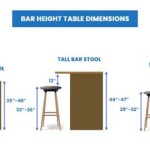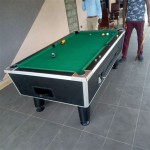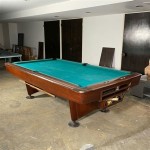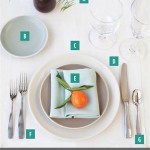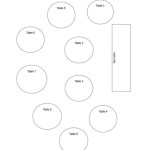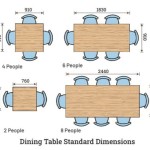How Long Is A Changing Table?
Determining the ideal dimensions of a changing table is a crucial aspect of preparing for a newborn. While there isn't a universal standard length, understanding the typical range and factors influencing the optimal size will significantly aid in selecting a changing table that suits individual needs and spatial constraints.
The length of a changing table generally falls within a specific range, influenced by design considerations and the intended age and size of the infant. Furthermore, safety standards and practical use contribute to determining appropriate dimensions. This article will explore the typical lengths, important considerations, and varying designs of changing tables to provide comprehensive guidance.
Typical Length Dimensions
The majority of changing tables available on the market typically range from approximately 30 inches to 40 inches in length. This range is generally considered suitable for newborns up to toddlers around the age of two years. The specific length chosen depends largely on the available space within the nursery or designated changing area, as well as personal preference for maneuverability and storage capacity.
Shorter changing tables, around 30 inches in length, are often chosen for smaller spaces or for families who prefer a more compact design. These are often seen in apartment settings or in nurseries where space is at a premium. They are also favored by those who appreciate a minimalist aesthetic and prioritize functionality over extensive storage.
Longer changing tables, extending up to 40 inches or slightly more, offer a more spacious changing surface. This extra length can be beneficial for larger babies or for parents who appreciate having additional room to organize supplies and keep essential items within easy reach. These larger models often feature more elaborate storage options, such as shelves, drawers, or compartments, further enhancing their practicality.
It’s important to note that simply focusing on the length alone is not enough. The depth (width) and height of the changing table also play critical roles in providing a comfortable and safe changing environment. The depth should be sufficient to comfortably accommodate the baby without feeling cramped, and the height should be ergonomic for the parent to prevent back strain during frequent use.
Factors Influencing Optimal Length
Several factors can influence the ideal length of a changing table for a particular individual or family. These considerations range from spatial restrictions to the intended duration of use and even the physical stature of the caregiver.
Available Space: The most significant factor is usually the amount of available space. Before purchasing a changing table, carefully measure the designated area to ensure that the chosen model will fit comfortably without obstructing pathways or interfering with other nursery furniture. Consider the space needed to move around the table and to access storage compartments.
Baby's Growth: While newborns are relatively small, babies grow quickly. A changing table that seems adequate initially may become too small as the baby gets older and longer. Consider purchasing a changing table with a length that will accommodate the baby's growth over a period of at least one to two years. This approach avoids the need to replace the changing table prematurely. Although the length is important, the weight capacity is also very important.
Storage Requirements: Changing tables often double as storage units for diapers, wipes, creams, and other essential baby supplies. The length of the changing table can influence the amount of storage space available. A longer changing table is more likely to incorporate more extensive storage options, either in the form of shelves, drawers, or a combination of both. Therefore, consider how much storage space is needed and choose a changing table length that accommodates those needs.
Caregiver's Height: The height of the changing table should be ergonomically suitable for the primary caregiver to prevent back strain. While height is the primary consideration, the length of the changing table can indirectly impact posture. A longer changing table may require slightly more reaching, which can be uncomfortable for some individuals. Ideally, the height of the changing table should allow the caregiver to change the baby comfortably without having to bend over excessively.
Convertibility: Some changing tables are designed to be converted into other pieces of furniture as the baby grows. For example, a changing table might be transformable into a dresser or a small bookcase. These convertible models often have a greater overall length to allow for the eventual transformation. If considering a convertible changing table, be sure to factor in the future use of the furniture when assessing the required length.
Different Changing Table Designs and Their Length Considerations
Changing tables are available in various designs, each with its own advantages and disadvantages in terms of length and functionality. Understanding the different types of changing tables and their typical length dimensions can help narrow down the selection process.
Standard Changing Tables: These are the most common type of changing table. They typically feature a flat changing surface with raised edges for safety and storage shelves or drawers underneath. Standard changing tables usually fall within the 30-inch to 40-inch length range, depending on the manufacturer and design.
Changing Table Dressers: Changing table dressers combine the functionality of a changing table with the storage capacity of a dresser. They typically feature a detachable changing tray on top of the dresser, which can be removed as the baby grows. The length of a changing table dresser is usually determined by the size of the dresser itself, and can range from 35 inches to 45 inches or more. This style requires more space but provides ample storage.
Portable Changing Tables: Also known as changing pads with straps, portable changing tables are lightweight and designed for use on any flat surface. They are typically smaller than standard changing tables, with a length ranging from 25 inches to 35 inches. While they are convenient for travel or small spaces, they lack the storage capacity of larger models.
Wall-Mounted Changing Tables: Wall-mounted changing tables are designed to be attached to a wall, saving floor space. They typically fold down when in use and fold up when not needed. Their length can vary, but they are usually designed to be compact when folded, with lengths ranging from 28 inches to 36 inches.
Changing Table Toppers: These are designed to be placed on top of an existing dresser or other piece of furniture. They provide a designated changing surface without taking up additional floor space. The length of a changing table topper will depend on the size of the furniture on which it is placed, but they generally range from 30 inches to 40 inches in length.
When selecting a changing table, consider the design that best suits the individual's space and storage requirements. Regardless of the design chosen, always prioritize safety features like raised edges, safety straps, and a stable construction.
Regardless of the chosen design, it is crucial to adhere to safety guidelines provided by the Consumer Product Safety Commission (CPSC) or other relevant regulatory bodies. These guidelines typically cover aspects such as construction materials, stability testing, and warning labels. Choosing a changing table that complies with these standards ensures a safe environment for the baby.
Beyond the physical dimensions, consider the material construction of the changing table. Solid wood construction is often preferred for its durability and stability. However, engineered wood products like MDF or particleboard can also be acceptable, provided they meet safety standards and are free from harmful chemicals like formaldehyde. Ensure the finish is non-toxic and easy to clean.
The ease of cleaning is another crucial consideration, especially given the nature of diaper changes. Select a changing table with a smooth, non-porous surface that can be easily wiped clean with a damp cloth or disinfectant wipe. Avoid materials that are difficult to clean or prone to staining. A removable changing pad cover that can be machine-washed is also a practical addition.
Finally, consider the long-term usability of the changing table. If opting for a convertible model, research the conversion process and ensure that it is straightforward and practical. If not opting for a convertible model, consider whether the changing table can be repurposed as storage or decoration after the baby has outgrown it. Choosing a versatile changing table can provide continued value even after the diaper-changing phase is over.

Linor Baby Changing Table Dresser With 3 Drawers And Storage Shelves Can Be Used As A Top Station Wood Diaper

Pottery Barn White Changing Table Hot

Sundvik Changing Tablechest Drawers Reviews Tell Me Baby

Buy Oxford Wooden 6 Drawer Dresser Baby Changing Unit White Dressers Changers Mamas Papas Uae

Wanan 3 Drawer Diaper Changing Table Dresser White

Extra Long Changing Table S

Oxylife Baby Nursery Changing Table Dresser With 3 Drawers And Shelf For Room Gray

Extra Long Changing Table

Long Changing Table 2025 Levitan Com

Extra Long Changing Table 2025


